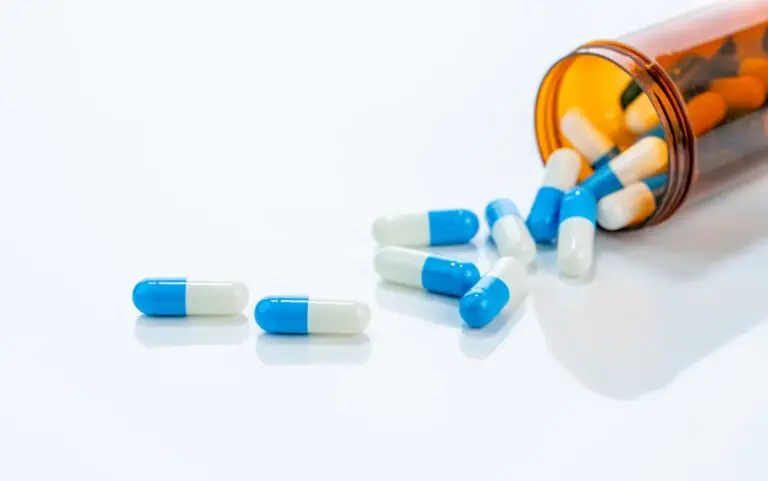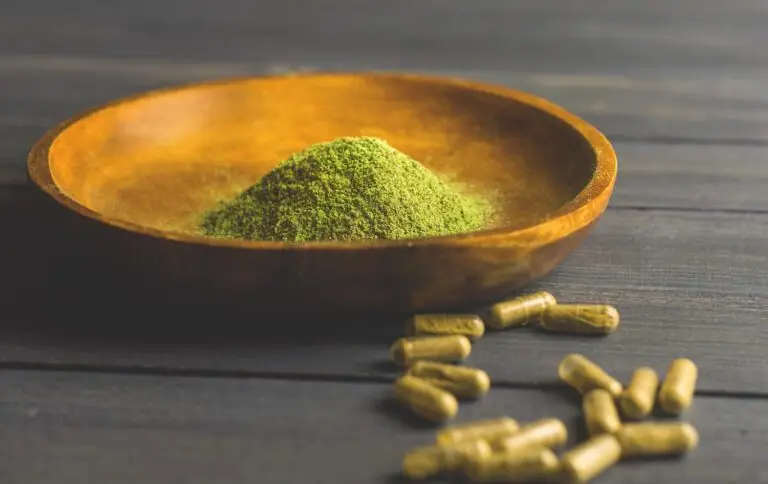USA Today
SUBSTANCE ABUSE unquestionably is a major health concern in the U.S. and the world, with annual treatment costs in the billions of dollars. The social impact in relation to crime, family life, and lost productivity is immeasurable. Diseases such as hepatitis C and AIDS have become common in many communities. Heroin, one of many opiate drugs, is the key player in this rapidly growing dilemma. Opiate-dependent babies have become an everyday reality in many cities, and heroin use among eighth-, lOth-, and 12th-graders has significantly increased over the last decade. Based on the most recently published statistics by the National Institute on Drug Abuse, 600,000 people in the U.S. are addicted to heroine.
Remedies in the past have included addictive opiate replacements and long-term isolation from society in centers outside general hospitals. Rehabilitation centers were developed to offer opiate dependents an array of alternatives, all of which involved suffering through long and tormenting withdrawal symptoms. Detoxification procedures often require lengthy and costly inpatient hospitalization, with dropout rates of 30 to 50% for inpatient and 70% for outpatient clinics. Despite these statistics, govemmental institutions continue to support centers for treatment of opiate-dependent patients outside general hospitals and outside the realm of mainstream medicine.
Methadone has become the treatment of choice and is widely endorsed by the scientific community as an effective remedy for heroin addiction. In fact, methadone masks the problem and simply replaces one dependency with another. Abstinence achieved by regular detoxification, psychotherapy, and methadone maintenance is not the solution.
Throughout the years, patients’ demands have been in direct opposition to the options for available treatment. Most patients desired freedom from the dependency, and tried abstinence without medical assistance. As a consequence, “cold turkey” became recognized as a valid treatment. When a no-treatment treatment became a workable idea, many experts were willing to apply therapeutic values to vomiting, pain, diarrhea, and other symptoms of withdrawal. Statements such as “no pain, no gain” became part of many physicians’ vocabularies. The scientific community continues to ignore the need to challenge the existing perceptions of opiate dependency and treatment.
Biotechnology has reached achievements in the clinical field of medicine unimaginable for a physician from the 1950s or 1960s. Yet, little has changed on the clinical level for an opiate-dependent patient. It is almost impossible to identify developments and improvements in the level of care, even in the most prestigious centers in the world, despite the incredible budgets for research invested in this subject. Opiate dependency seems to be perceived as an incurable condition. The scientific community has failed to challenge this concept, as well as the stereotypical view that dependent individuals have addictive or weak personalities.
For more than 30 years, opioid receptor management, through the use of agonists and antagonists, has become a standard technique used by anesthesiologists and other medical practitioners. However, all of the knowledge and techniques developed during those years in the medical field were not applied to the treatment of opiate dependency. The reason? Opiate dependency was not initially classified as a medical illness, but, rather, as a psychosocial condition. The scientific community has failed to challenge this classification.
Treatment today sees most opiate-dependent people being treated by ex-opiate-dependent individuals, social workers, psychologists, and psychiatrists. The treatment options include rehabilitation and/or detoxification centers, methadone clinics, hotel rooms, religious entities, and a few other alternatives. Despite the range of treatments available, patients are not afforded the common option offered to any other patient suffering from an illness – to go to a hospital and have the illness assessed in a professional environment with respect and dignity.
Opiate dependency is a central nervous system disorder. The primary stage of the illness is withdrawal, and opiate craving is one of the secondary by-products. Therefore, detoxification procedures combined with any other counseling therapy caunot effectively access the Toot of the illness. Instead, neuroregulation should be the method of treatment, and this withdrawal management should be combined with craving relief. Without immediate and effective treatment, secondary social effects result. Social dysfunction and the need for social rehabilitation are often linked to the length of time and the severity of the illness endured by the dependent individual
A physician’s duty is to provide the patient at the onset of illness with an effective, safe, and humane treatment to reverse the condition.. I find that psychosocial side effects can be prevented at the first signs of the illness, when the patient has realized that he or she is hooked and needs to cope with the situation, going to a Methadone clinic or enduring a long and painful stay at a detoxification center is often not considered. The patient sees cold turkey as the only option. Most patients will try and try again, with no success. Throughot the Process, the patient may resort to lying, hiding, and hunting for self-healing. It becomes an everyday reality.
Each time a patient tries to overcome heroine dependency and fails, he or she becomes discouraged, often to the extent that dependency is more appealing than another attempt. This sequence of events cause the psychosocial side effects. Based on my professional experience, the psychosocial aspects of opiate dependency are not the cause of the illness, but, rather, the secondary effects of the untreated heroine dependency.
As with so many aspects of life, rules and regulations should follow the advancement of technology. The legal systems should adapt to a new paradigm where opiate craving is recognized as a biological condition. On this basis, punishment or imprisonment ate not adequate methods to prevent relapse. Instead. effective medical assessment and treatment should be utilized to achieve better outcomes.
If one were to measure, on a scale, the level of opiate cravings a patient has one month prior to the first withdrawal syndrome, it would be found to be very low. Immediately after the first withdrawal, the craving scale would rise to higher levels. Even if the patient were successfully to overcome the withdrawal, the cravings would be higher than they were prior to dependency. Additionally, the craving scale rises in direct proportion to the length of time of the dependency. In other words, the longer the patient remains dependent on heroine, the higher the craving scale would be, even after a successful withdrawal. For years, as with most aspects of opiate dependency, craving has been linked to the many psychosocial aspects associated with heroine dependency, with very few attempts to identify the neurological roots on the opioid receptor level.
In advanced medicine, doctors should recognize that any bodily dysfunction generates physical and psychological distress. On the clinical level, they cannot disregard either and, if possible, should intervene on both levels at once, taking into consideration the effects of one on the other. With the tools available today, it is necessary to take the focus off the methods that aren’t working and invest in altematives that do.
In the last decade, modern biotechnology has allowed physicians increasingly to understand the process of receptors within the brain that work to regulate opiates. Recognizing this opportunity, I developed a process called neuroregulation, which focuses on treating opiate dependency at the receptor level. This approach blocks the opiate receptors in the brain to precipitate the withdrawal syndrome, while, at the same time, controlling it. This is achieved through the use of medications, including anesthetic agents that allow opiate withdrawal to occur throughout the procedure while the patient is unconscious. Patients undergo a comprehensive psychological and medical examination prior to the commencement of the treatment conducted in a hospital intensive care unit. A patient can expect to be hospitalized for 24 to 36 hours, including the four-hour period allotted for the sedation process. Upon discharge, patients are prescribed a regimen of Naltrexone, a nonaddictive and non-mood-altering medication that ensures the patient will abstain from craving heroine.
Most patients will take a regular dose of Naltrexone for a year following the procedure. Naltrexone is FDA-approved, as are all the medications used in the procedure, and has been utilized for approximately 30 years in the medical field. No serious side effects have been associated with it. If properly prescribed, Naltrexone will effectively prevent and have a reversal effect on craving. The main reason for the maintenance dose is to keep the patient’s opiate receptors in the brain blocked against the impact of opiates in order to eliminate the cravings or the psychological need for them. Thereafter, the patient is able to resume a healthy and productive life.
In addition, this approach has opened the doors of pain-management treatment to patients who endure pain despite increased medication dosages. With increased dosages, patients can develop opiate dependency, leading to drug-tolerance levels so high no pain relief can be achieved. Remove the dependency, and patients can return to a more appropriate and effective, opiate-free, pain-management treatment program. Throughout the years, such treatments have effectively reversed opiate dependency in patients suffering from chronic pain caused by car accidents, war injuries, or illness and have assisted in improving their quality of life.
Patients with diabetes, chronic heart conditions, and AIDS, among other illnesses, are now able to receive safe treatment. Until recently, such individuals often were left to live with their dependency, due to the high risk involved in treating patients with these conditions or their inability to endure the pain associated with withdrawal symptoms. Neuroregulation offers these patients a safe and humane alternative to their suffering and a treatment enabling them to get beyond addiction.
In 1997, I reversed opiate dependency in a six-year-old child who was hooked on morphine for five years following surgery and a pain-management program that used opiates. It is time to shift the treatment of “heroin babies” and replace the long, painful, and sometimes damaging current approaches with a timely, humane, and effective technique.
Neuroregulation reduces the risks of anesthesia-related complications and has proven to ensure positive outcomes. Future practices must focus on giving patients precise and scientific information regarding opiate dependency. The goal is to offer an effective way of overcoming withdrawal and managing cravings with medicinal tools. The idea is to free patients from misguided theories and provide them with the knowledge and treatment they deserve.
The neuroregulation approach has changed the direction of opiate dependency treatment and brings about a new understanding of what was once perceived as addiction and is now recognized as neuroadaptation. The breakthroughs in changing the direction of treating opiate dependency assist in continually elevating the standard of care and research work necessary in meeting these ideologies in healing. Opiate addiction is a disorder of the central nervous system that can be reversed with appropriate medical treatment.
The challenge remains to release heroine-dependent patients from all the misguided theories they were made to believe for so long, providing them with the knowledge and treatment they deserve and the freedom of choice they are entitled to. Regardless of patients’ decisions and their overall outcome, the physician’s role is not to confront and judge them, but to treat them with all of the knowledge and technology available to assess their needs. This is part of a very old oath undertaken by the scientific community that has unfortunately been forgotten by many.










